The annual general meeting (AGM) is a crucial meeting for the proper functioning of almost any type of organization. It is a democratic and decisive moment to review the year and make future decisions.
Let’s see together how to organize an annual general meeting efficiently and of course without compromising its formalities
You will find in this article:
The functions and formalities of the annual general meeting
The conduct of the annual general meeting
Our advice for a successful annual general meeting

The functions and formalities of the annual general meeting
First of all, it is important to understand the purpose and the basic rules of an annual general meeting.
The AGM allows decisions to be made regarding the achievement of an organization’s objectives. It brings together the associates to discuss the past year’s results as well as the coming year’s activities to have a clear portrait of the next steps to take.
An annual general meeting allows:
- Share the activities and financial portrait
- Vote on renewals and amendments
- Re-elect board members and auditors
- Approve budget estimates
- Make decisions related to the objectives
The formalities of an annual general meeting are established by a procedural guide, i.e. the internal regulations or by-laws of the organization.
These rules determine the method of convocation, participants, quorum, voting requirements, and any other details that will allow you to hold a proper AGM.
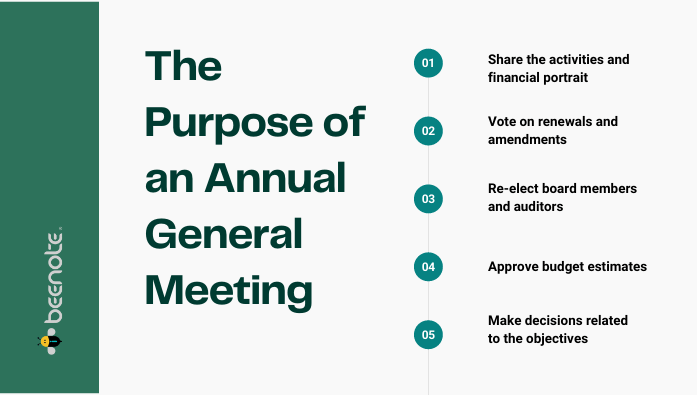
Planning and convening
Planning your annual general meeting is essential. The person in charge of organizing the meeting and convening it is usually the president, vice-president, a secretary, or a board member. This detail is normally written into your company’s bylaws.
The mode of convocation
The method of the convocation is how the meeting will be held. An annual general meeting is usually conducted in person, but the bylaws may allow for virtual or even hybrid mode.
Over the past few years, we have seen an increase in online meetings either due to constraints or by choice of optimization. Today, we know that remote meetings are quite possible and can be as constructive.
If your AGM is online, the formalities must be followed, just as they are for a face-to-face meeting. Make sure you have the right tools like Beenote to reconcile the meeting and important information safely.
The people convened
The bylaws also determine who may attend the meeting, but sometimes they do not. In this case, all the members of your organization should be called without distinction.
Other people are often convened for operational purposes, such as the financial manager.
In short, the participants of the general meeting are people who must be indispensable in the presentation of results and the decision-making.

The structure of the convocation
The notice of meeting is sent about 8 to 15 days before the day of the general meeting. The convocation can be in other words the agenda which includes the following information:
- The name of your organization
- The author’s name of the convocation
- The leader of the annual general meeting
- The people convened
- The date and time of the meeting
- The location and/or URL of the virtual meeting
- Discussion points and related documents
- Voting topics such as resolutions
To conduct your AGM, you can use a meeting management software like Beenote to create a structured agenda. This annual general meeting agenda template can give you a base and customize it to your needs.
Thus, the agenda can be shared in advance for the convocation and followed in real-time, and projected on a screen during the meeting. Your documentation will be centralized and secured until the meeting. You will also be able to send the meeting notice by email to all participants.
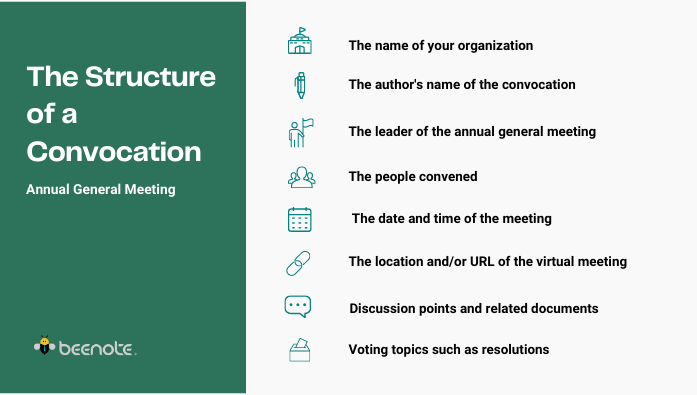
Conduct of the Annual General Meeting
The introduction of the meeting usually begins with a speech by the president. Then, the moral and financial reports are normally presented and the agenda carefully guide the deliberations.
Conduct an annual general meeting:
- Attendance of the participants
- Introduction of the president and secretary of the meeting
- Review of the agenda topics
- Presentation of the financial reports
- Vote and election with the resolutions on the agenda
- Conclusion and approval of the annual general meeting
- Writing and signing of the minutes
For a more detailed plan, you can use our annual general meeting agenda template.

Attendance and quorum
The first formal step in a meeting is for participants to sign an attendance sheet.
The attendance sheet allows the number of people present and voting to be known to respect the quorum established in the by-laws. If the number of participants is deficient, the meeting can be suspended.
With Beenote, you automatically have an attendance record that is created if the participants log in to the meeting. If not all participants have access to the software, you can add a note to the agenda to take attendance.
The conduct of the votes
The conduct of the votes shall be governed by the bylaws which shall include the method of voting and the formality of a quorum, i.e., those eligible to vote.
Each voting member has only one vote by the democratic principle. There are two voting methods: a show of hands or a secret ballot. If your meeting is held online or hybrid, it is possible to vote by mail outside the meeting or by virtual vote during the meeting.
The majority of requirements are determined according to the size and type of decision and must also be included in your resolutions. These are usually established in the rules of procedure.
- Relative majority: the decision is adopted when the votes in favor outweigh the votes against, regardless of the number of votes cast
- Absolute majority: the proposal must obtain at least half of the votes
- Qualified majority: this requires, for example, two-thirds or three-quarters of the authorized votes
- Unanimity: creates a veto for any member

Still following the agenda, deliberation is guided by each item that requires a vote. Once a resolution is adopted, it must become a decision.
By opting for our complete Beeboard formula, you can add your resolutions in advance in your agenda with all the required details and then consolidate the decision in real-time during the remote or face-to-face vote.
Writing the minutes
Once the annual general meeting is over, it is time to write the minutes. This vital document allows the absent members to have a summary of the meeting, but also to have legal proof to which to refer in case of contestation.
It must be accessible to all associates and kept in a secure place. Your minutes should include the elements of the convocation mentioned earlier, i.e. the agenda topics including the decisions and all the necessary documents in case of important modifications. Once revised, the document must be signed.
By producing an agenda with our meeting management software, you can automatically create minutes at the end of your meeting that includes notes, decisions, and documents and saves 80% of the writing time.
You can then share them with Beenote associates or save them in PDF format. With our Beeboard version, you can even sign the minutes electronically with one or more signatories.

Our advice for a successful annual general meeting
Whether you hold an annual general meeting in person, virtually, or in a hybrid format, it is important to follow the right formalities, but above all to have the right tool to do so.
A meeting management software allows you to have a structured agenda that can be modified in real-time, the consolidation of decisions, centralization, and accessibility, the security of information as well as the conformity of the minutes.
Take a free trial of Beenote to benefit from all its advantages. In addition, we always have new features to improve and meet your needs.
In short, you’ll save a tremendous amount of time by digitizing your annual general meeting process. What do you think about it?
A passionate web content creator and writer at Beenote, her primary motivation is to create content that can guide organizations looking to optimize their meetings and boards. Giving practical resources to inspire businesses to adopt best practices to become meeting pros. No more wasting time!






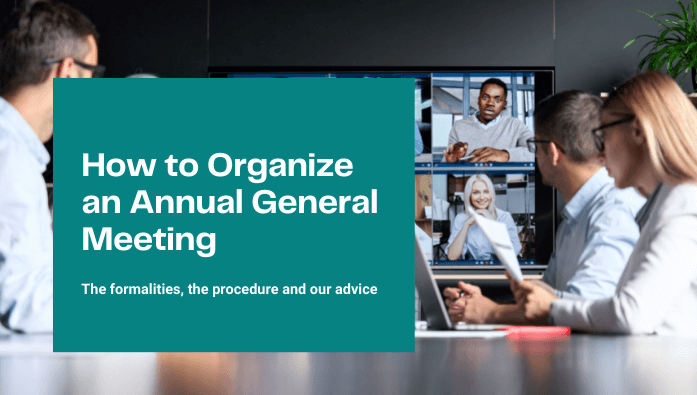

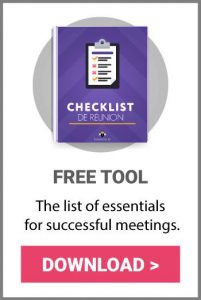
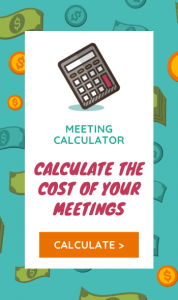
0 Comments